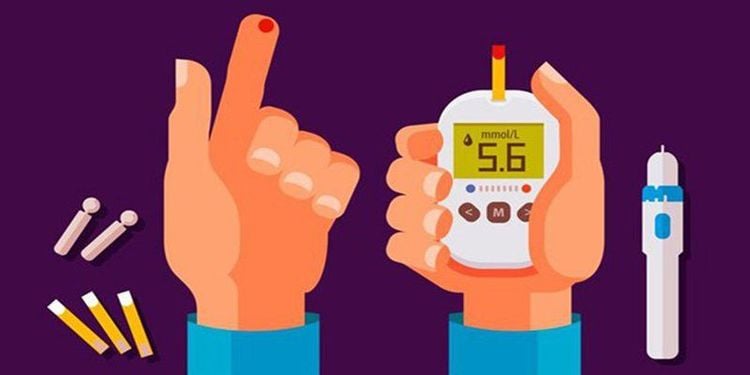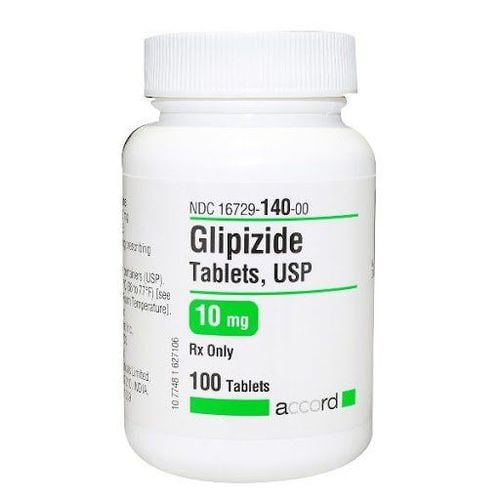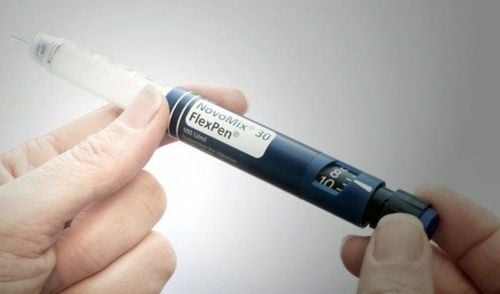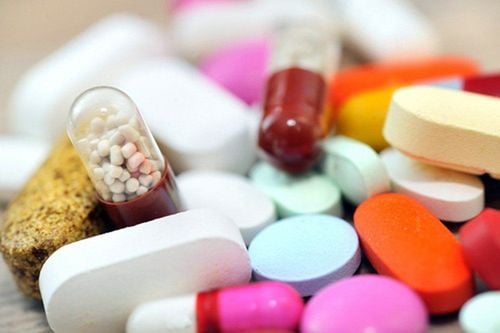This is an automatically translated article.
Diabetes mellitus is a common chronic disease in our country, affected mainly in middle age. However, nowadays, the percentage of children with diabetes is increasing day by day. Symptoms of diabetes in children also have some differences compared to adults.1. Diabetes in children
There are many forms of diabetes, but type 1 and type 2 diabetes are the two most common. Both forms can occur at any age, but until recently, the most common type of diabetes in children and adolescents was type 1 diabetes. It was called juvenile diabetes.1.1 Type 1 Diabetes Type 1 diabetes is caused by the pancreas not producing enough insulin. When that happens, the body cannot properly metabolize the sugars, causing them to build up in the bloodstream. These sugars (also called glucose) cannot be used by the body and are excreted in the urine. This leads to the main symptoms of type 1 diabetes such as increased urination, thirst, appetite, weight loss.
1.2 Type 2 Diabetes Type 2 diabetes used to be called adult-onset diabetes. But now it is also becoming more common in young people, due to the rising prevalence of childhood obesity. With type 2 diabetes, the body doesn't make or use insulin properly, leading to high blood sugar.
2. Causes of diabetes in children
The real cause of diabetes is not really known.For type 1 diabetes, the causes can be genetic or some viruses, when infected, can damage the pancreas, causing diabetes. As a result, type 1 diabetes often has an earlier and more frequent onset. Type 2 diabetes in children is often caused by an unhealthy diet, today children have a more complete diet, but are less active, so the rate of overweight and obese children increases. . As a result, the percentage of children with type 2 diabetes has also increased.

Bệnh tiểu đường type 2 ở trẻ em thường được gây ra bởi chế độ ăn uống không lành mạnh
3. Manifestations of diabetes in children
Children and adolescents with diabetes typically experience four main symptoms (frequent urination, increased thirst, increased appetite, increased weight loss). In some cases, there are even no signs.Symptoms of type 1 diabetes in children tend to develop rapidly over a few weeks. Type 2 diabetes symptoms develop more slowly. It can take months or years to get a diagnosis.
3.1 Type 1 Diabetes Type 2 diabetes can start at any age, have peaks between the ages of 5-6 and then reappear between the ages of 11-13.
The first sign is usually an increase in frequency and frequency of urination. This is often most noticeable at night, including recurrent bedwetting in children.
Other important symptoms that should also be included in the diagnosis of diabetes: Your child will complain of thirst and fatigue, will start to lose weight and will have an increased appetite, he or she may show signs of blurred vision, fruity breath, fatigue, irritability,...
3.2 Type 2 diabetes Signs of type 2 diabetes in children include: Urinating more often, especially at night, increased thirst, fatigue, unexplained weight loss, itching around the genitals, possible yeast infection, slower-than-normal wound healing, blurred vision.
4. Treatment of diabetes in children
Once diagnosed with diabetes, a child needs to be treated with a pediatric endocrinologist. Because type 1 usually means that most of the pancreatic islet cells have been destroyed and cannot produce enough or no insulin, the only treatment for diabetes in children is insulin therapy. Usually, your doctor will plan an insulin regimen that's right for your child's individual requirements and habits.Treatment of type 2 diabetes in children depends entirely on how far the disease has progressed. In the early stages, it can be treated with lifestyle changes that incorporate a healthier diet and exercise. If the blood sugar is still not well controlled, the doctor will prescribe oral medication for the child. When using oral drugs but not improving, then insulin will be added.

Trẻ sẽ cần sử dụng Insulin trong trường hợp bệnh không cải thiện sau khi dùng thuốc
5. Preventing diabetes in children
It is currently not possible to prevent type 1 diabetes, but parents can help children take steps to reduce the risk of developing type 2 diabetes such as:Maintain a healthy weight: Children who are overweight are at risk have type 2 diabetes, as they are more likely to have insulin resistance. Exercise every day: Regular physical activity helps reduce insulin resistance and also helps keep blood pressure under control. Limit sugary foods and drinks: Consuming a lot of foods high in sugar can lead to weight gain. A balanced, nutrient-dense diet, with plenty of vitamins, fiber and protein will reduce your risk of type 2 diabetes. Vinmec International General Hospital now has a Cardiovascular and Diabetes Screening Package with The following outstanding advantages:
Performed by a team of medical professionals - doctors who are leading experts, highly qualified, dedicated and wholeheartedly for the benefit of the patient. With 90% holding university degrees, 20% are professors and associate professors, nearly 30% are doctorates, bringing high efficiency in medical examination and treatment. Comprehensive and professional medical examination, consultation and treatment services. The system of modern equipment, supports effective diagnosis and treatment. Modern, civilized, luxurious and sterile medical examination and treatment space.
Please dial HOTLINE for more information or register for an appointment HERE. Download MyVinmec app to make appointments faster and to manage your bookings easily.
SEE ALSONeonatal diabetes: What you need to know Causes and effects of insulin resistance in people with diabetes Heredity and type 1 diabetes













